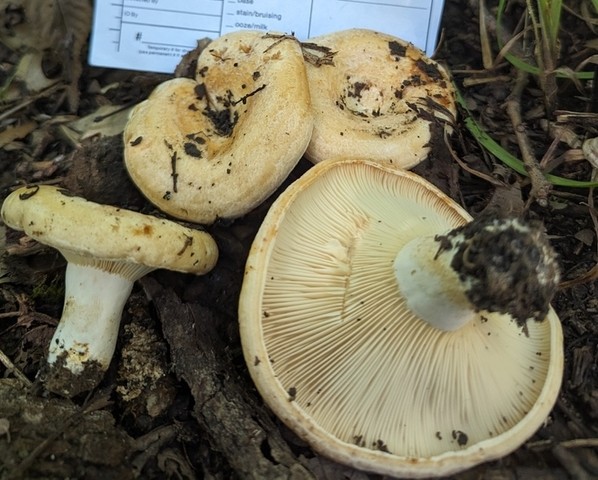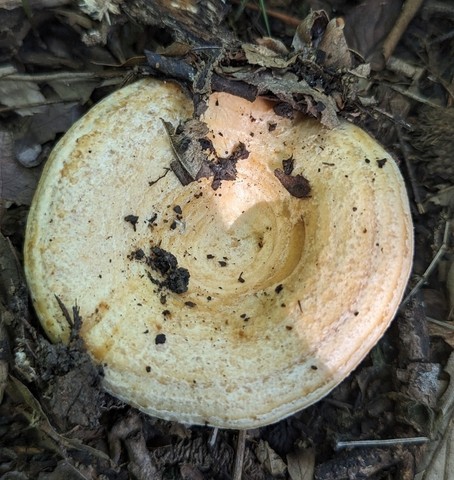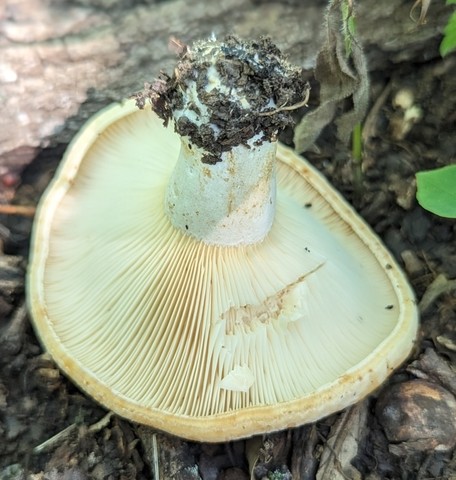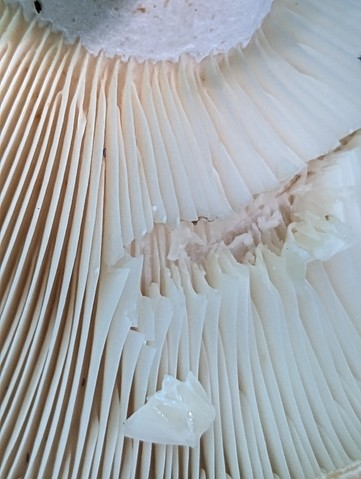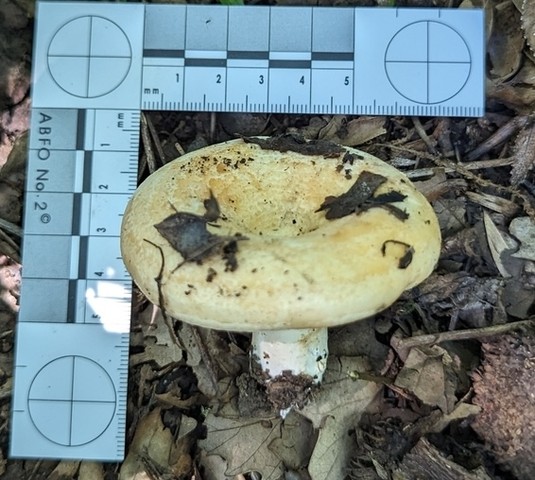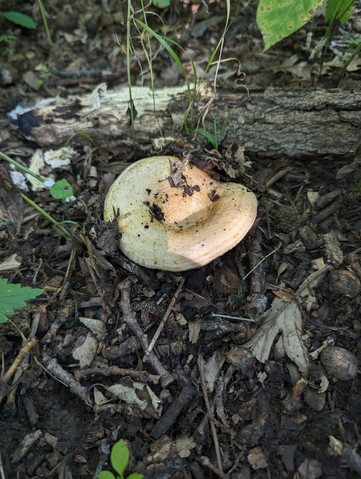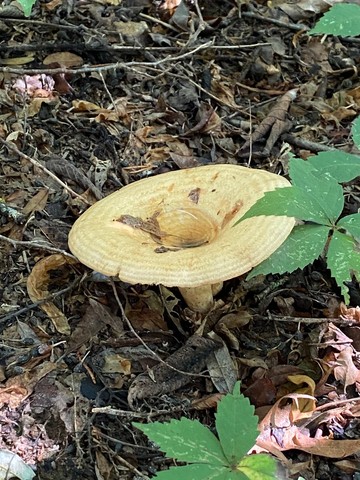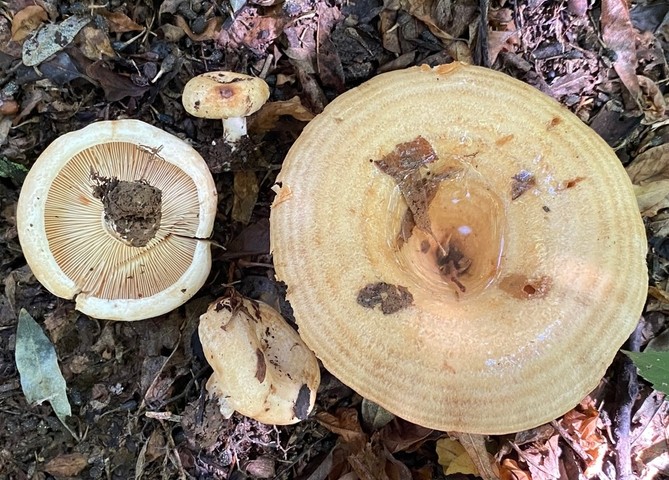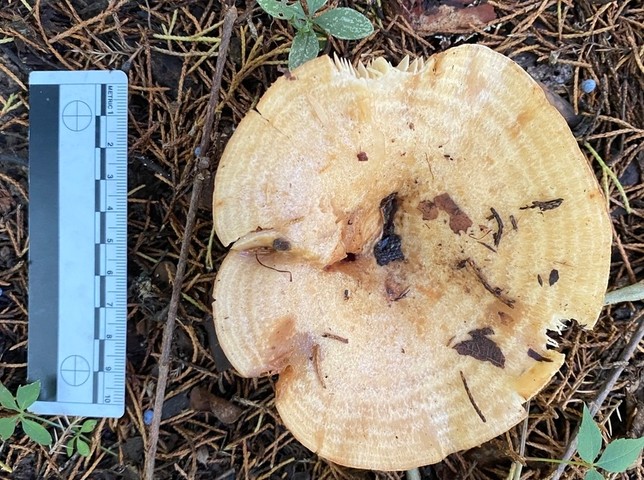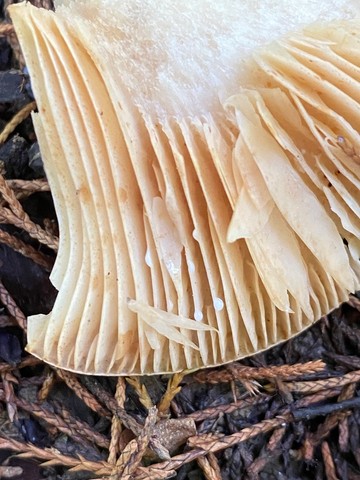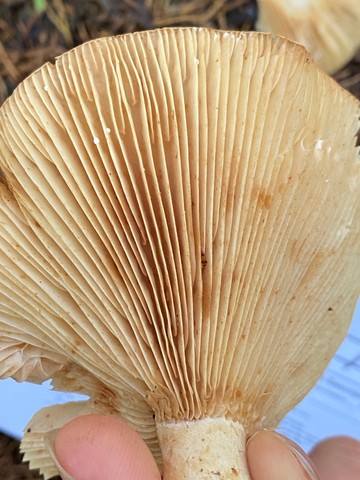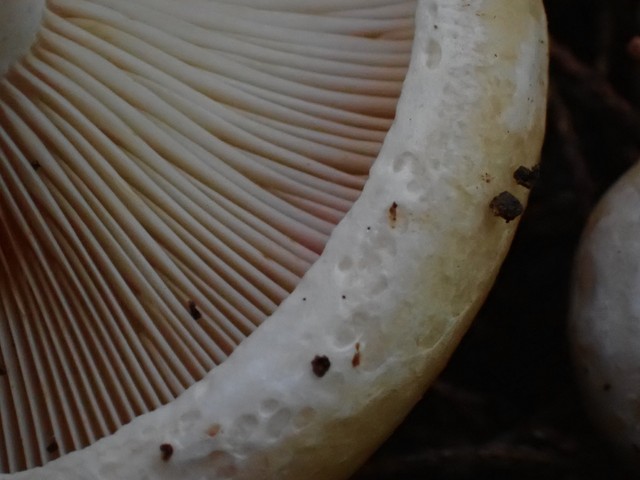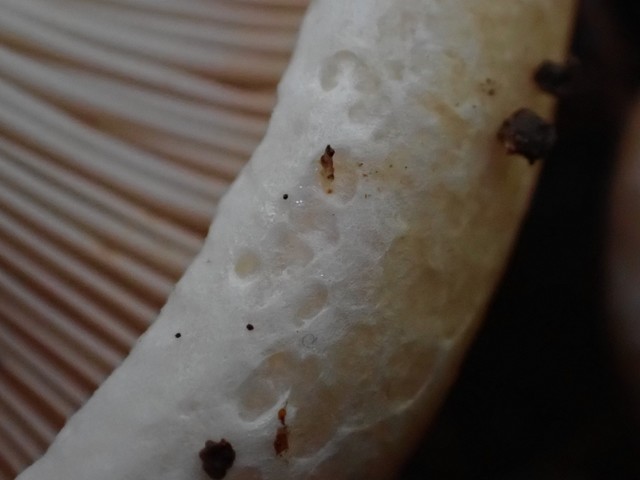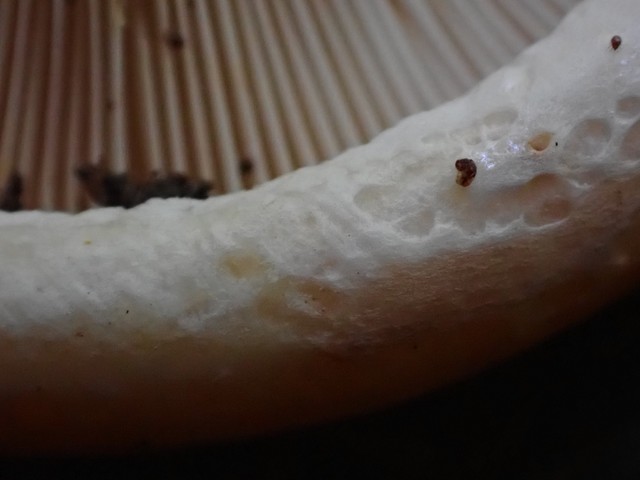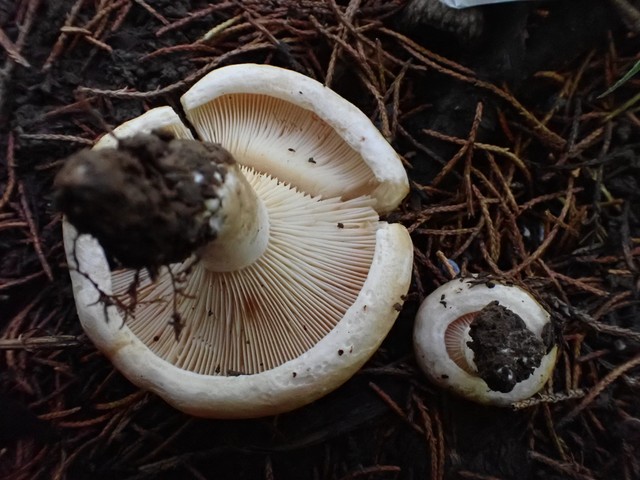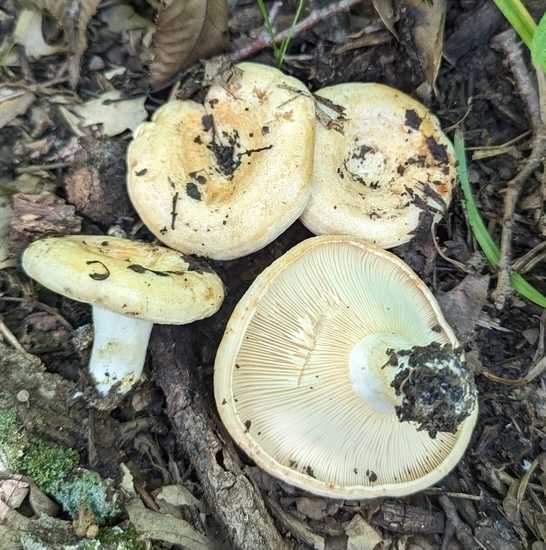Acrid Lactarius
Lactarius psammicola
Life > Fungi > Basidiomycota > Agaricomycotina > Agaricomycetes > Russulales > Russulaceae > Lactarius
Description
The Acrid Lactarius is a mycorrhizal mushroom that associates with Oak trees and can be found in summer through fall. It is widely distributed and common east of the Rocky Mountains in North America.
This gilled mushroom exudes white latex when cut. The taste is exceptionally spicy (acrid). The cap shape is centrally depressed and regularly catches rain water like a funnel. The top of the cap has a repeating concentric zone pattern which alternate between different tones of yellow. The spore color is yellowish.
July 14th, 2023 Field Notes - Indian Cave State Park
- Growing gregariously in open mixed oak/hickory woodland edge.
- Nearby Trees: Bur Oak, Chinkapin Oak, Shagbark Hickory, Black Oak, and distant Northern Red Oak.
- Cap funnel-shaped, tacky (adhering to duff), with orange concentric ring zones and an inrolled margin.
- Lamellae exuding white latex when cut.
- Smell: faintly of burnt rubber.
- Taste: very acrid (spicy).
August 10th, 2023 Field Notes - Indian Cave State Park
Growing gregariously in needles and duff under Eastern Red Cedar and Chinquapin oak on the edge of a mixed oak/ hickory woodland. Trees: eastern red cedar, chinquapin oak, red oak, and Elm
- Cap: funnel shaped with deep central depression (catching rainwater); concentric zonation alternating between different shades of orange. Old specimens brittle. Tacky. Inrolled margin on young specimens, fanning out on older ones.
- Gills: decurrent, exuding white to cream latex. Latex scarce. Cutting tissue doesn’t result in latex. Existing latex on gills in seemingly random locations.
- Stipe: short (3cm); firm; tan colored.
- Smell: fruity; apricot-like
- Taste: EXTREMELY ACRID (spicy)
- KOH: pileipellis: faint yellow; gills: indistinct; stipe: darkens surface.
- Ammonia: pileipellis: indistinct to darkening; gills: indistinct; stipe: darkens
L. psamicola is a close taxon, however, it is described as having a hairy margin in young specimens (Kay, et al, 2022) and this one has a smooth to slightly flocose margin at best in young specimens.
References
Kuo, M. (2011, March). Lactarius psammicola. Retrieved from the MushroomExpert.Com Web site: http://www.mushroomexpert.com/lactarius_psammicola.html
Created October 14, 2025 at 3:03 PM
